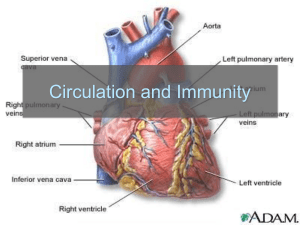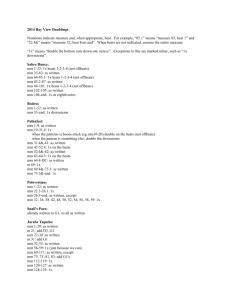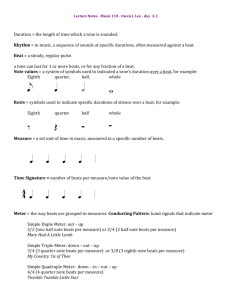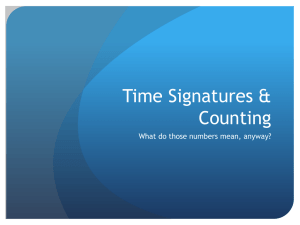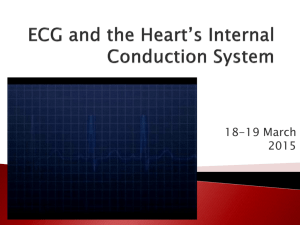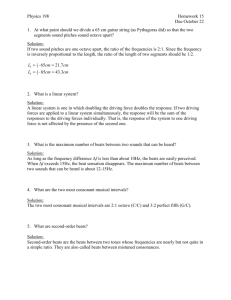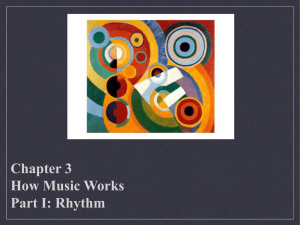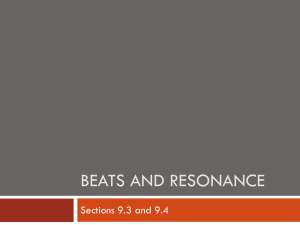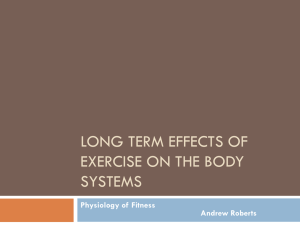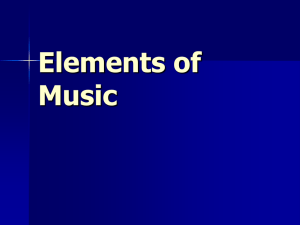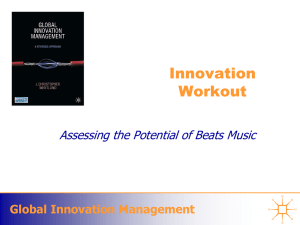Nervous Control of the Heart
advertisement
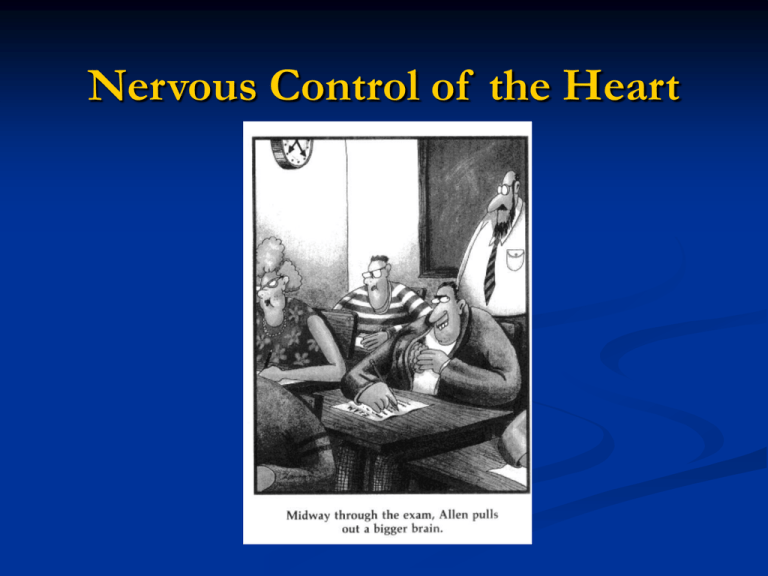
Nervous Control of the Heart Internal Control of Heart Rate The heart or cardiac muscle beats involuntarily. The beat of each cell of heart muscle is in synchrony or in pace with the beat of every other heart muscle cell. Nervous impulses from a specialized bundle of nervous tissue called the Sinoatrial (SA) Node control the rate of the heart beat and also synchronize the beating of all cardiac cells. Internal Control of Heart Rate The sinoatrial or SA node is known as the pacemaker. The SA node causes a wave of contraction to start in both the and This wave of contraction causes the Atrioventricular (AV) node to initiate contractions of the ventricles. Internal Control of Heart Rate The bundle of HIS carries the nervous stimuli to all parts of the ventricle via Purkinje Fibres which brings the impulse to each cardiac cell. The SA node paces the heart at 72 beats/min which can be considered a “normal” resting heart rate. External Control of Heart Rate The Medulla Oblangata in the brain controls the nerves that influence heart rate. O2 and CO2 concentration levels in the blood are measured by chemoreceptors that stimulate one of two nerves to the heart in order to maintain homeostasis. 1. 2. Increased or accelerated heart rate is caused by stimulation of the sympathetic nerve. Decreased or slowing of the heart rate is caused by the stimulation of the parasympathetic nerve. Pressure sensitive baroreceptors in the arteries respond to changes in the blood pressure. Factors Affecting Heart Rate Increase Physical Activity = Increase in Heart Rate Increase in Emotions = Increase in Heart Rate Chemicals that Increase Heart Rate 1. 2. 3. 4. Nicotine Adrenaline Thyroxin Caffeine Chemicals that Decrease Heart Rate 1. 2. Carbon Monoxide Alchohol Tachycardia When your heart beats more than 72 beats per minute, such as during exercise or from the consumption of caffeine or nicotine. Bradycardia When the heart beats very slowly, less than 72 beats per minute, such as athletes who have an elevated cardiac output even during rest. Heartbeat Sounds If you listen to your heartbeat through a stethoscope you hear 2 characteristic sounds that repeat over and over as the heart continues to beat: Lub-dub, lub-dub… Lub • • • The sound which is a result of the closing of both atrio-ventricular valves (tricuspid/bicuspid) Occurs during Systole, or ventricular contraction (i.e. atricular relaxation) Is louder and longer of the 2 sounds Heartbeat Sounds Dub • • • The sound which is the result of the closing of both semi-lunar valves (pulmonary/aortic) Occurs during Diastole, or Ventricular relaxation (or atrial contraction) Is the softer and shorter of the 2 sounds.
